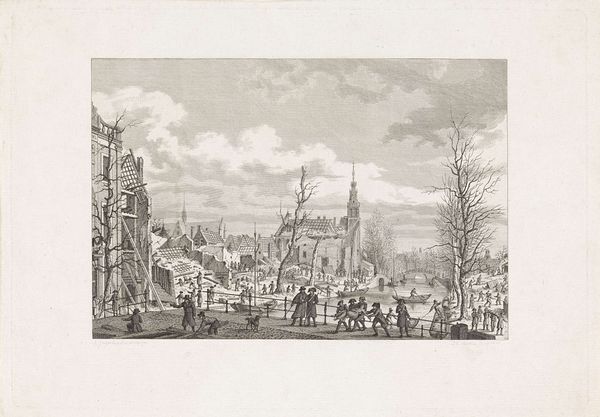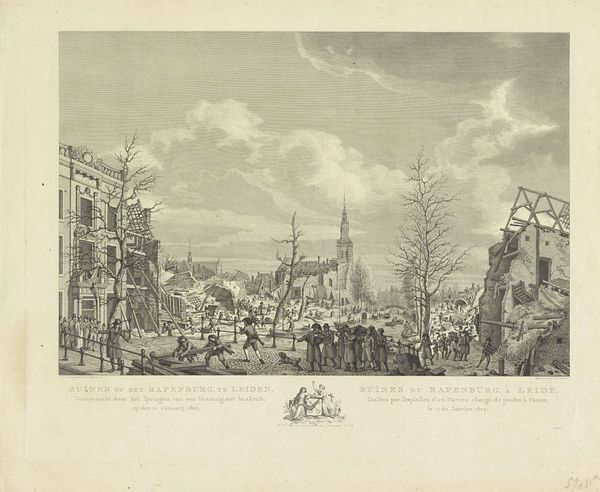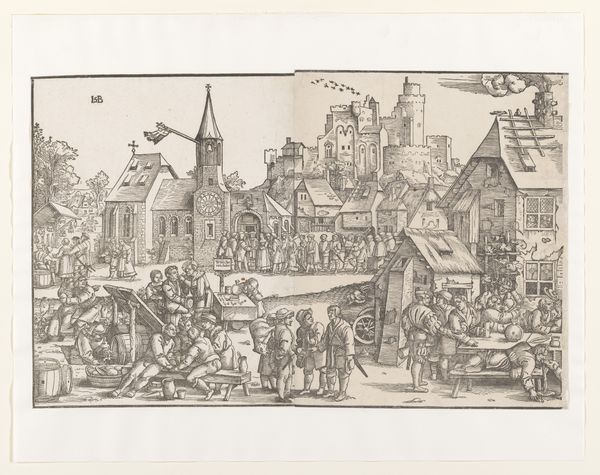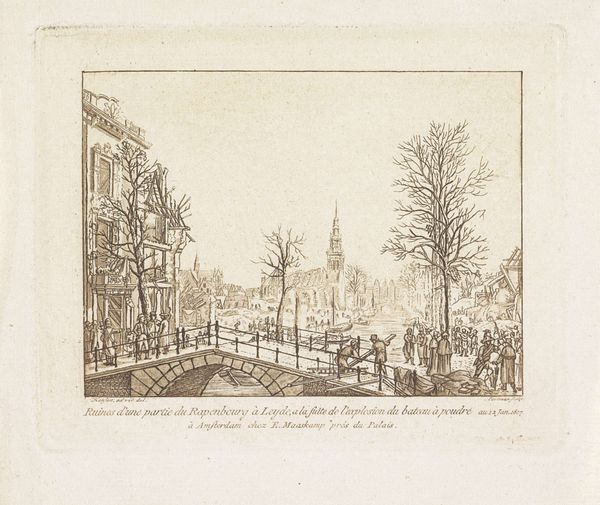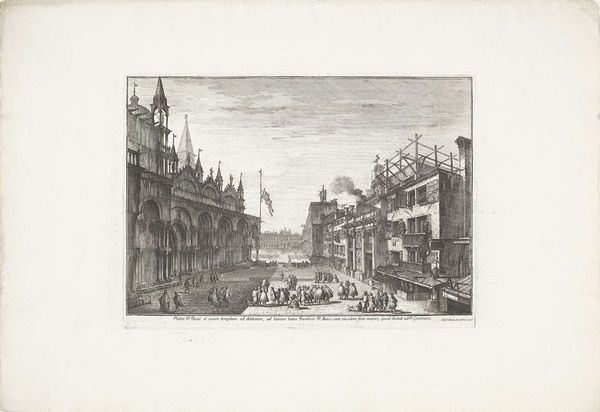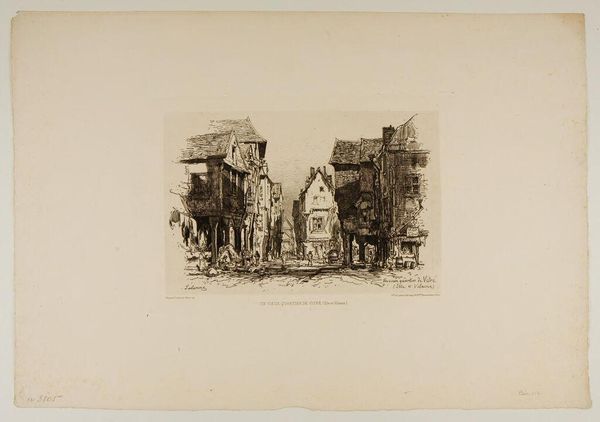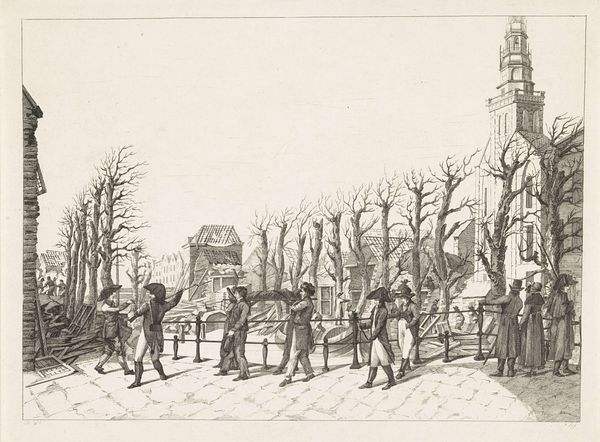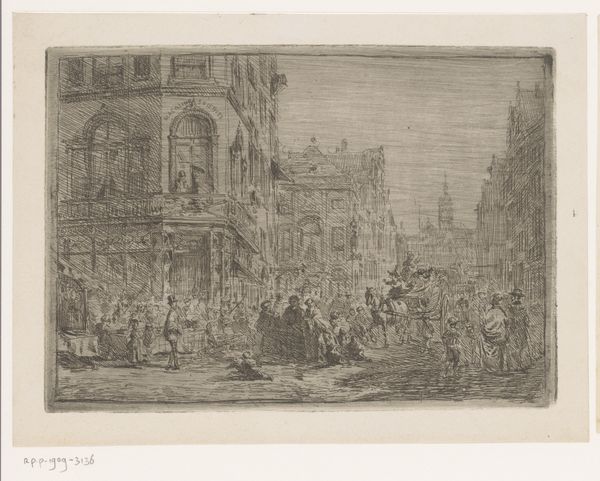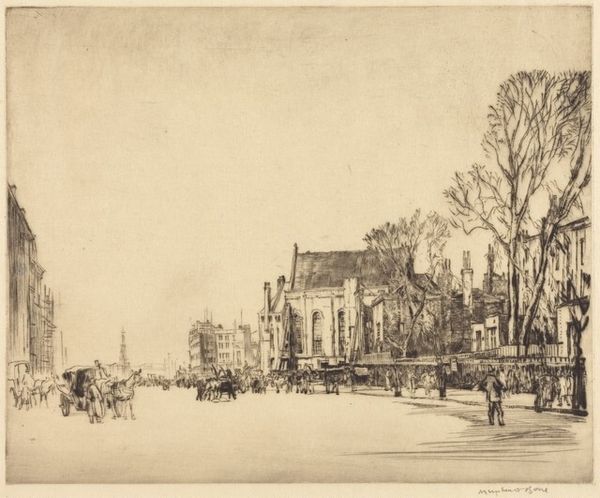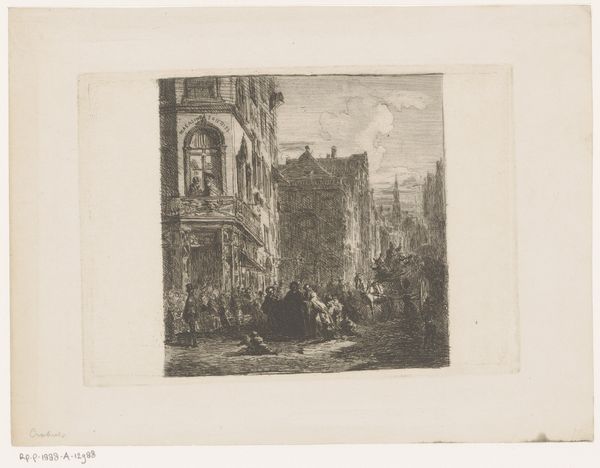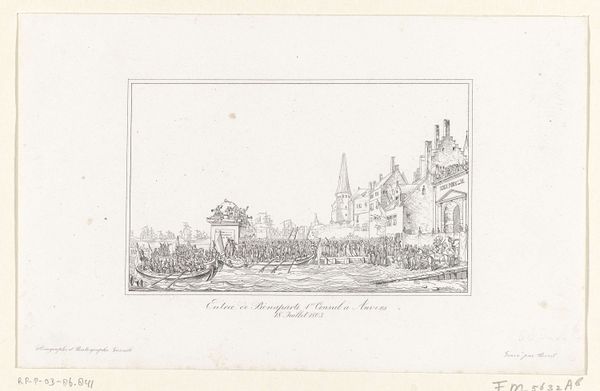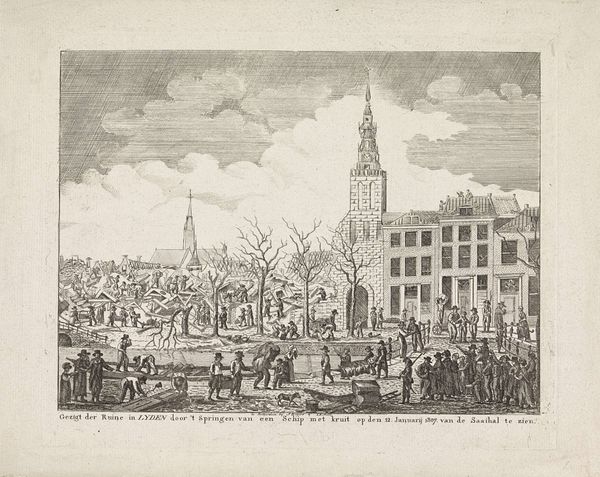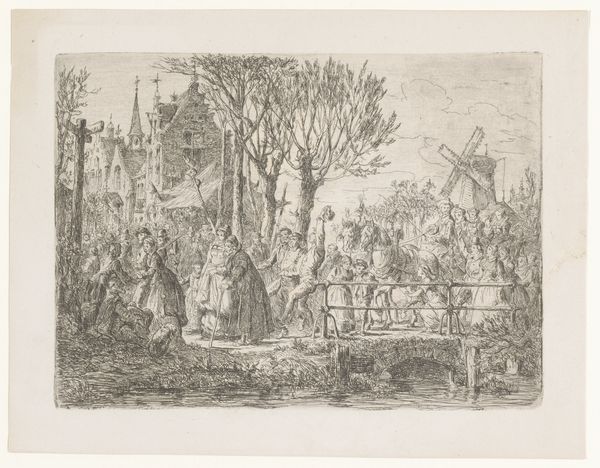
print, etching
# print
#
etching
#
landscape
#
romanticism
#
cityscape
#
history-painting
Dimensions: height 230 mm, width 330 mm
Copyright: Rijks Museum: Open Domain
Curator: Jacob Ernst Marcus created this etching in 1807, titled "Ruïnes op het Rapenburg te Leiden na de ramp, 1807," documenting the aftermath of a devastating event in Leiden. Editor: My immediate impression is one of somber devastation. The sky is an unrelieved white, and the damaged buildings loom, skeletal, against it. There's a stark contrast between the ruins and the seemingly indifferent activities of the people. Curator: The print's strength lies in its meticulous detail. Marcus's use of line to delineate the ruined buildings, capturing the textures of broken brick and charred wood, it’s a fascinating display of romanticism in ruins. Note how he’s framed the damage with meticulous, objective linework, yet still imbues the scene with this profound air of melancholy. Editor: Yes, but let's not overlook the historical context. 1807. This image documents real consequences. The work serves as an observation of collective grief. Marcus is highlighting class dynamics amidst disaster - some families likely held considerable power in Leiden during this historical trauma. I question how much he considered those social fractures in his objective portrayal. Curator: The structural elements provide a stark perspective on resilience. The human figures in the foreground offer a spatial counterpoint. These elements invite our eye into the landscape, but they serve also to reestablish that linear organization between destruction and ongoing society. The dog near the people walking almost invites you, too. It grounds the etching in a place between social critique and simple reportage. Editor: Do they though? If we explore further, it feels almost like people reclaiming, repurposing. We, the viewers, might take that grounded place you describe and use it to understand that society's survival amidst chaos stems from interdependence and an innate understanding of social contracts and survival amongst historical trauma. It's about rebuilding power from below rather than merely 'social critique.' Curator: Perhaps, but let’s also acknowledge that in focusing too heavily on social readings, we can miss Marcus’s conscious arrangements of shadow, form, and line—those elements imbue the landscape with something beyond mere representation. Editor: Agreed. Although an artwork’s intrinsic aesthetic values hold significant weight, our exploration allows for the merging of perspectives, weaving nuanced perspectives between aesthetic qualities, historical implications, and emotional response. Curator: Indeed. In the end, "Ruïnes op het Rapenburg te Leiden na de ramp, 1807," transcends simple documentation.
Comments
No comments
Be the first to comment and join the conversation on the ultimate creative platform.
